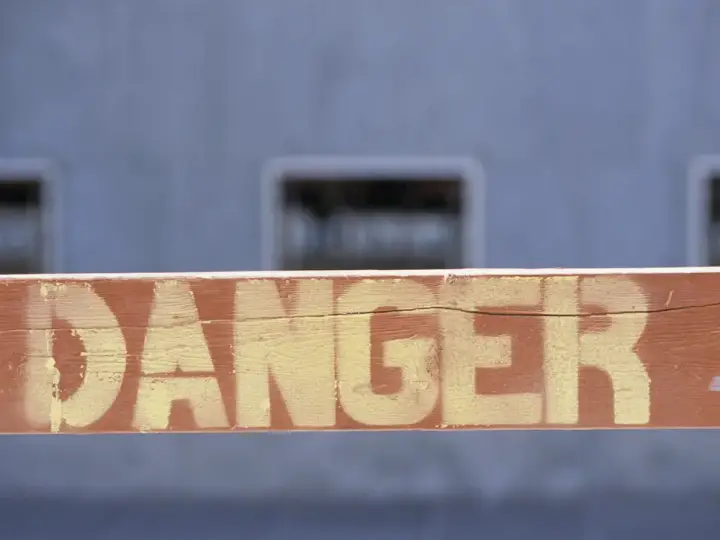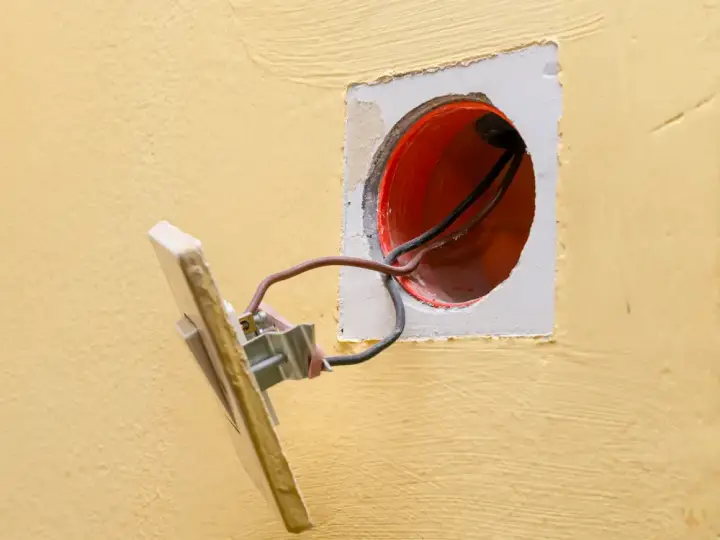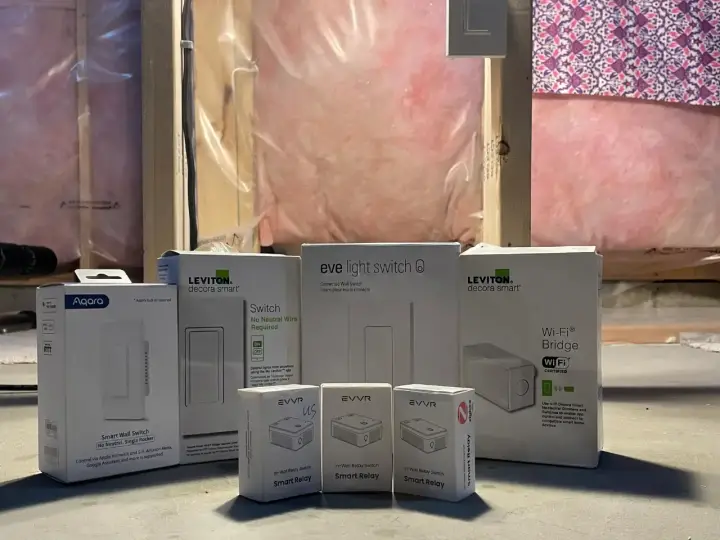The 15 (Hidden) Hazards of Smart Home DIY You Need to Know
Updated on 3rd Nov 2020 18:12 in General, Smart
If you want to build a smart home chances are you have heard people talk about DIY. There's a good reason it will come up: it can save you serious money while getting it done your way. Those advantages are huge and almost always make it worth pursuing a DIY project, especially when it comes to smart homes. Despite the benefits, one question everyone should ask is when should you DIY and when should you buy an existing solution or pay a professional? The answer isn't always straightforward but generally, you will want to avoid projects that deal with safety and security directly.

Table of Contents
This article talks about the potential dangers of performing DIY projects. To illustrate the concept, a list of common projects has been included. The risks listed are not comprehensive and should not be used to plan a potentially dangerous project. Always consult with a professional before doing work on your home!
What's wrong with DIY?
So the premise of this post probably leads you to believe there is a problem with DIY, I want to reassure you that there is nothing inherently wrong with doing things yourself. In fact, if you've ever read other posts on this site, you will know that I love DIY and recommend it as much as I can! For those are both qualified and comfortable with whatever the task might be, they should go for it as the rewards will be great. The problem is that smart homes often deal with aspects of the home that affect our daily lives in ways that could be quite dangerous if done incorrectly.
Despite the fact that I recommend DIY to everyone, there are situations where you should be cautious or even consider not doing the project at all. We will go over those situations in more detail, sorting them into low, medium, and high risk categories. The general rule is that you should not attempt anything that could seriously injure you or someone else. While that may seem obvious, the fact is that it isn't always easy to identify what is dangerous and what isn't. There are many things in a modern home that must be done a certain way by law, even if they seem impractical or silly.
DIY risk levels
The following three risk levels represent different degrees of exposure to danger. Under each level is a list of activities commonly undertaken while building a smart home, along with the risk associated with each one. Also listed is a brief description detailing the reasons why the task could be dangerous. Every item will have a pictogram associated with it under the "Hazards" column, the order is important as it indicates the risk of each one. Hazards that are listed first will be of bigger concern than those listed later, but of course, all of the hazards are important and could cause harm.
Here is a legend:




Finally, we must say that this list is not comprehensive and that some hazards might not be listed for a given activity. The idea of these tables is to give you an idea of how each situation could be dangerous and why. Always consult with a professional before doing any work and do your own research before doing a project.
You are responsible for your own safety and the safety of others!
Low risk
These things are typically low risk and could probably be done by most people if they do some research beforehand. Despite the fact that they are listed here as being low risk, it is important to consider your own capabilities. The fact that a task is considered low risk does not mean that you should attempt it, especially if you have never done it before. Do your research and be sure to understand the task at hand.
| Task | Hazards | Description |
|---|---|---|
| Building a smart hub | Building a smart hub is normally fairly safe as it deals with low voltages. | |
| Working on low voltage, battery-powered devices | As the voltage is low, there is little risk. | |
| Configuring automations | In most cases, automations can't do anything too damaging. Make sure it can never do something unsafe, such as close the door on someone. | |
| Swapping out light bulbs for smart ones | Small shock hazard. Be sure to turn off the power before changing the bulb to reduce chances of shock. | |
| Setting up smart plugs | Small shock hazard. Be careful not to put your fingers near the back of the plug. | |
| Installing smart blinds | Typically safe, be sure to mount it securely so it doesn't fall on anyone. |
Disclaimer: This list is not comprehensive, rather it is a list of common activities along with what could possibly happen if you do them wrong.
Medium risk
The following things are typically at a medium risk level and could still be done by most people. The problem lies with how these situations can be deceptively dangerous, especially the ones involving electricity. Many do not realize it but one of the biggest risks with electrical work is fire. An incorrectly wired connection could create sparks and heat which could be enough to ignite the materials inside your walls, starting a fire. The worst part about this is that the danger is not immediate, a vulnerable wiring job could work fine for a while before eventually resulting in a fire.
| Task | Hazards | Description |
|---|---|---|
| Installing a smart light switch | Installing a smart switch is relatively straightforwards, but forgetting to turn off the power could result in a shock. Wiring things incorrectly cause also result in a fire! | |
| Installing a smart receptacle | While it is equally as straightforward to install, doing it with the power on could cause shocks. Wrong wiring could also result in a fire! | |
| Using smart plugs with high-powered appliances | Smart plugs have a maximum current rating for a reason: above that, they can melt and cause fires! Never exceed the maximum rating! | |
| Installing a smart door lock | An incorrect installation could make the lock ineffective. Always be careful when changing the lock on your front door! |
Disclaimer: This list is not comprehensive, rather it is a list of common activities along with what could possibly happen if you do them wrong.
High risk
The following should be done with extreme caution and should not be attempted unless you know exactly what you are doing. They could either injure while you are working on them or cause injury or loss of property at a later date. In almost every case, it's best to leave these activities to the professionals. Some of these might seem fairly innocent but the items on this list are included here if they have the ability to cause significant damage to you or your property if done incorrectly. In addition to the obvious risks, some situations seem impractical or silly but are actually required by law for safety reasons.
| Task | Hazards | Description |
|---|---|---|
| Making changes to the home's electrical wiring |
|
Making any changes to the wiring is a dangerous activity and should be left to a professional in all cases. |
| Installing a smart valve on a water pipe |
|
It is always best to be cautious when water is involved. If a pipe suddenly starting leaking water it could flood areas of the home causing massive damage. |
| Building a security system |
|
Security is something you should almost never DIY. You do not want to be responsible should something terrible happen as a result of your work. |
| Changing safety systems (ex: smoke detectors) |
|
Safety systems exist to save lives. Making changes could prevent them from doing so, never make changes to safety systems yourself! |
| Installing a smart switch on a gas fireplace |
|
This inconvenience actually exists such that you can immediately see if the fire failed to ignite. If something goes wrong, a gas leak could cause an explosion. |
Disclaimer: This list is not comprehensive, rather it is a list of common activities along with what could possibly happen if you do them wrong.
How to DIY safely
After considering the previous points, the general feeling you should have is that you must be careful with what you mess with. The take away is that there are a lot of things that could go wrong while you are doing things yourself and before starting any such activity it's important to understand those risks. You may be more risk-tolerant than someone else, which will obviously affect which tasks you are willing to do. Despite that, it's still important to understand your own limitations along with the potential dangers associated that can be hidden.
The general guidelines for safety are:
- Don't mess with safety systems (smoke detectors, alarm systems)
- Be very careful when altering how a system works, sometimes the inconvenience exists for a reason (such as a physical switch with a gas fireplace)
- Hire a qualified electrician for any wiring changes, they can be dangerous
- Hire a qualified plumber for any changes in piping, they could cause floods or fires
The most important point is that DIY is great and allows us all to get closer to the technology that powers our lives, but whenever we consider a DIY project we must also ask "what could go wrong here". In some situations, the potential failures are so severe that it simply isn't worth taking the risk of doing it your self. Imagine if as a result of installing a smart smoke detector yourself, the device failed to go off when the house was on fire - the result could be catastrophic. If the possible failures are serious enough to cause injury you must approach it with extreme caution, and even then it is probably better suited to the professionals.



